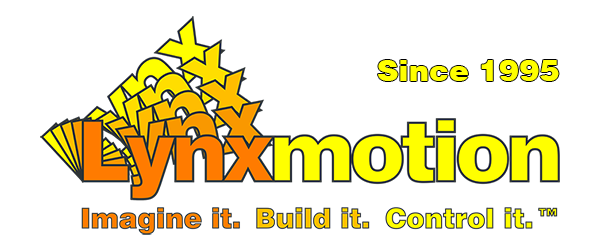Changes for page LSS-PRO Configuration Software
Last modified by Eric Nantel on 2024/10/04 08:08
Change comment: There is no comment for this version
Summary
-
Page properties (1 modified, 0 added, 0 removed)
Details
- Page properties
-
- Content
-
... ... @@ -46,13 +46,11 @@ 46 46 47 47 == Safety & Useful Buttons == 48 48 49 -This section includes the important emergencystop49 +This section includes the important E-stop (removes power from the motors via software) and other useful commands. 50 50 51 -Note: Those commands are sent to the selected servo, if "254 - All servos" is selected then it will be sent to all of them. 52 - 53 53 [[image:LSS-P-Config-Buttons.png]] 54 54 55 -1. This button sends a RESET command. More information [[HERE>>doc:ses-pro.lss-pro.lss-p-communication-protocol.WebHome||anchor="HReset"]] 53 +1. This button sends a RESET command to the servo. More information [[HERE>>doc:ses-pro.lss-pro.lss-p-communication-protocol.WebHome||anchor="HReset"]] 56 56 1. This reset the servo to factory default settings, removing all configurations, including the ID. More information [[HERE>>doc:ses-pro.lss-pro.lss-p-communication-protocol.WebHome||anchor="HDefault26confirm"]] 57 57 1. This command halts the actuator at whatever angle it is (whether during a motion or already at an angle) and causes it to hold that position (motor is powered and holding). The following command is sent to all servos, not just the one connected via USB. 58 58 \\Command sent: #254H<cr> ... ... @@ -62,22 +62,20 @@ 62 62 63 63 Command sent: #254L<cr> 64 64 65 - __the arm may fall and damage itself__or whatever is in its environment.63 + Just like the emergency stop button the 36V large power supply which is provided with each PRO arm, the E-Stop is meant to be under emergency only, as power is cut to all motors, which may result in joints rotating because of high torque being applied. In the case of a robotic arm, the arm may fall and damage itself or whatever is in its environment. 66 66 ))) 67 67 68 68 == Status == 69 69 70 -As a servo is intended to be moved to specific angles, the position of the servo, to 0.01 degrees of accuracy, is displayed at the bottom left of the interface. 71 - 72 72 [[image:LSS-P-Config-Status.png]] 73 73 74 74 This is a section to directly give information to the user on what's happening with their actuator. 75 75 76 -1. ThePositionshowsthe currentangle of the output shaftf the servoinrelation to itsconfigured origin (0 degree) angle (including any adjustment to the Origin Offset).It also displays angles over 360 degrees, and it’s important to note this is a calculated position as the internal sensor can only read 0 to 360 degrees. The multi-turn angle is retained even after a power cycle.77 -1. Status of what the actuator is currently doing. More informationHERE78 -1. Errors that are happening. More informationHERE72 +1. Position of the actuator including any adjustment to the Origin Offset. 73 +1. Status of what the actuator is currently doing. (A list of the different statuses is available HERE) 74 +1. Errors that are happening. (A list of the different errors is available HERE) 79 79 80 -Note: Most errors will require the problem to be solved & the servo either Reset or set Limp. To view and resolve any errors, go to the troubleshooting section76 +Note: Most errors will require the problem to be solved & the servo either Reset or set Limp. 81 81 82 82 == Servo Control == 83 83 ... ... @@ -143,6 +143,9 @@ 143 143 1. Two separate "Add" button and drop down are present, they are shortcuts to add to the query bellow. 144 144 1. Query that will be sent to the actuator plus displayed units for the interface. 145 145 142 +=== Saving Data === 143 + 144 + 146 146 == Custom Actions == 147 147 148 148 This list of assignable buttons allows the user to select specific commands to send to the servo. These can be used to quickly position the servo to specific angles, experiment with different speeds and more.

